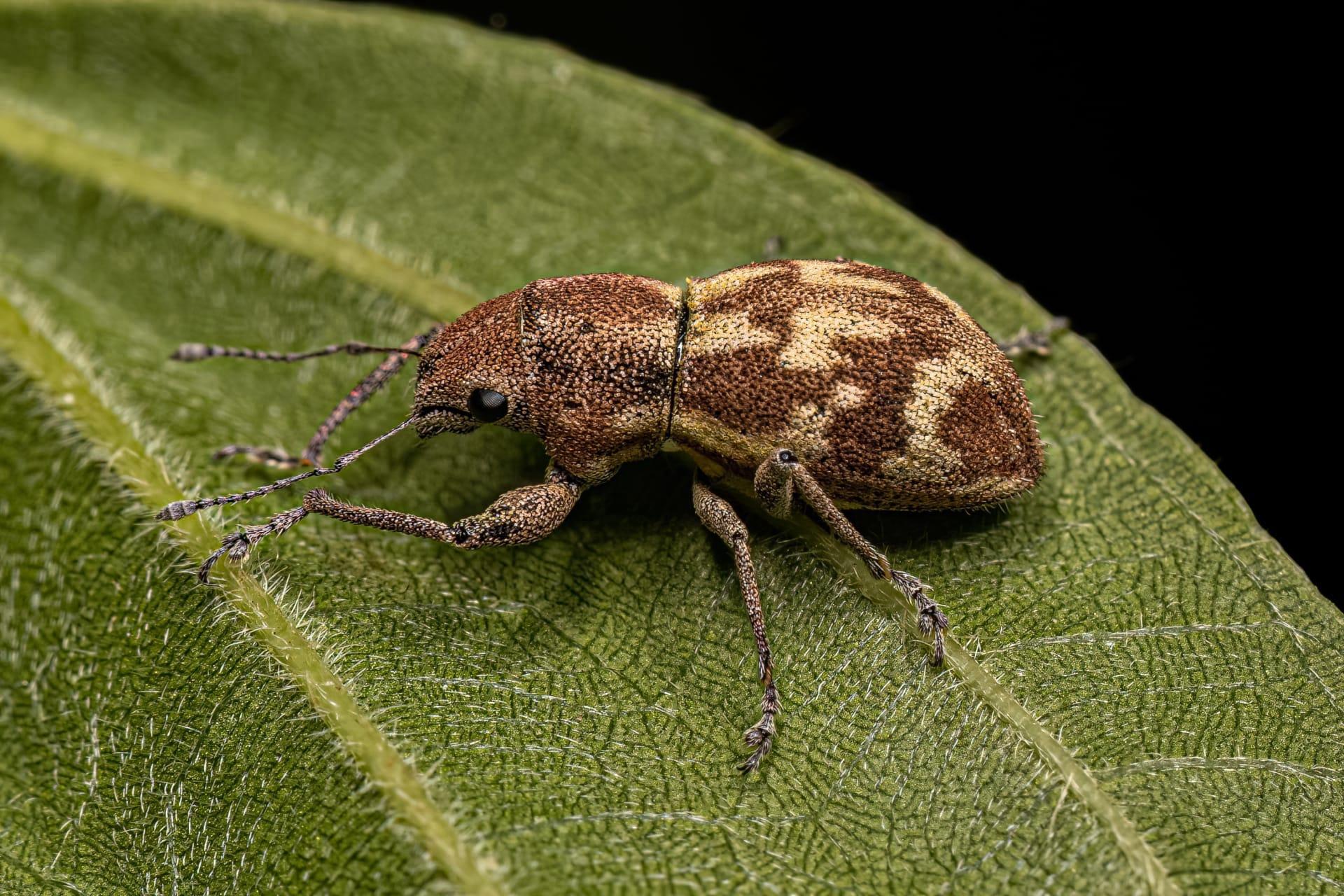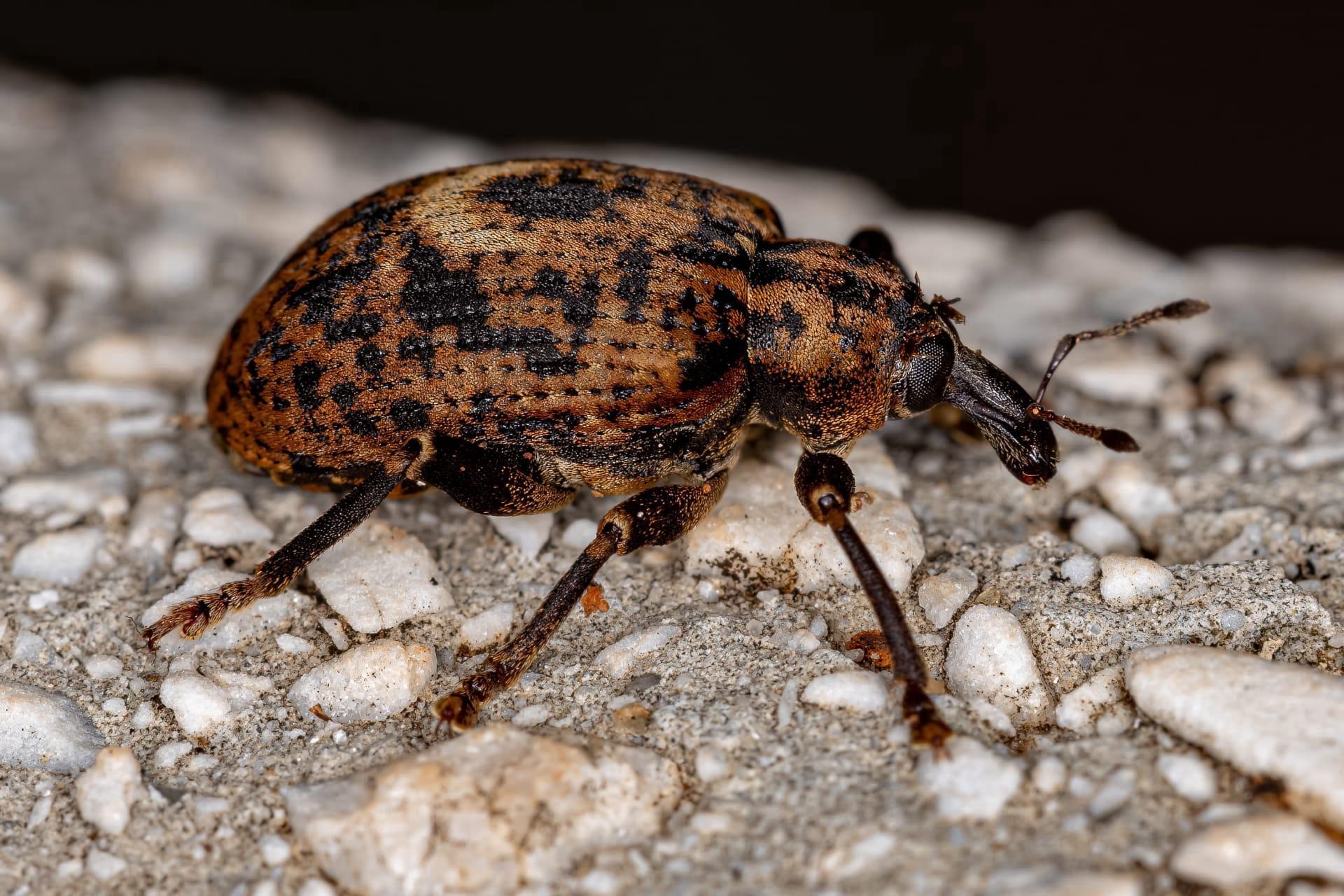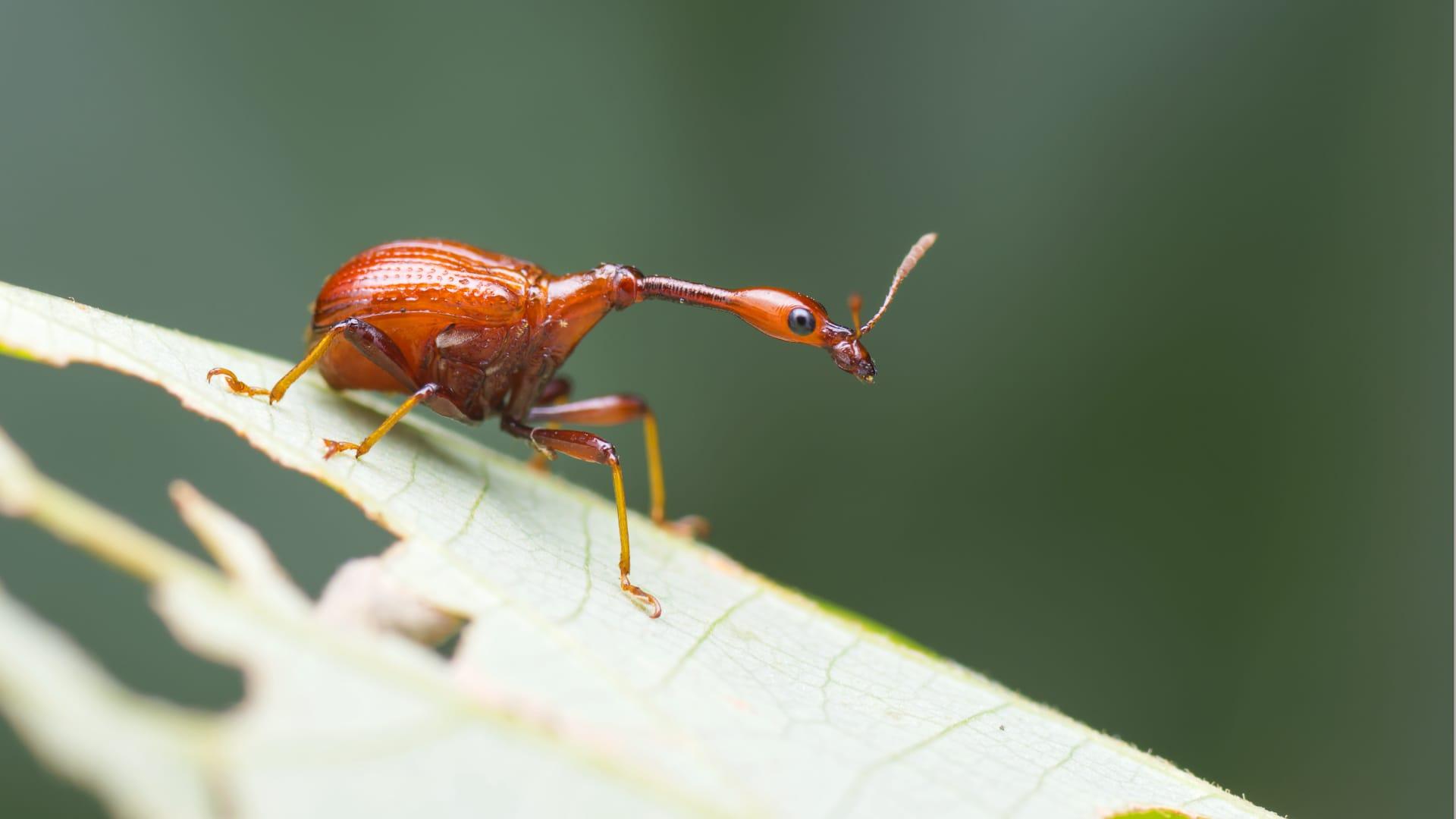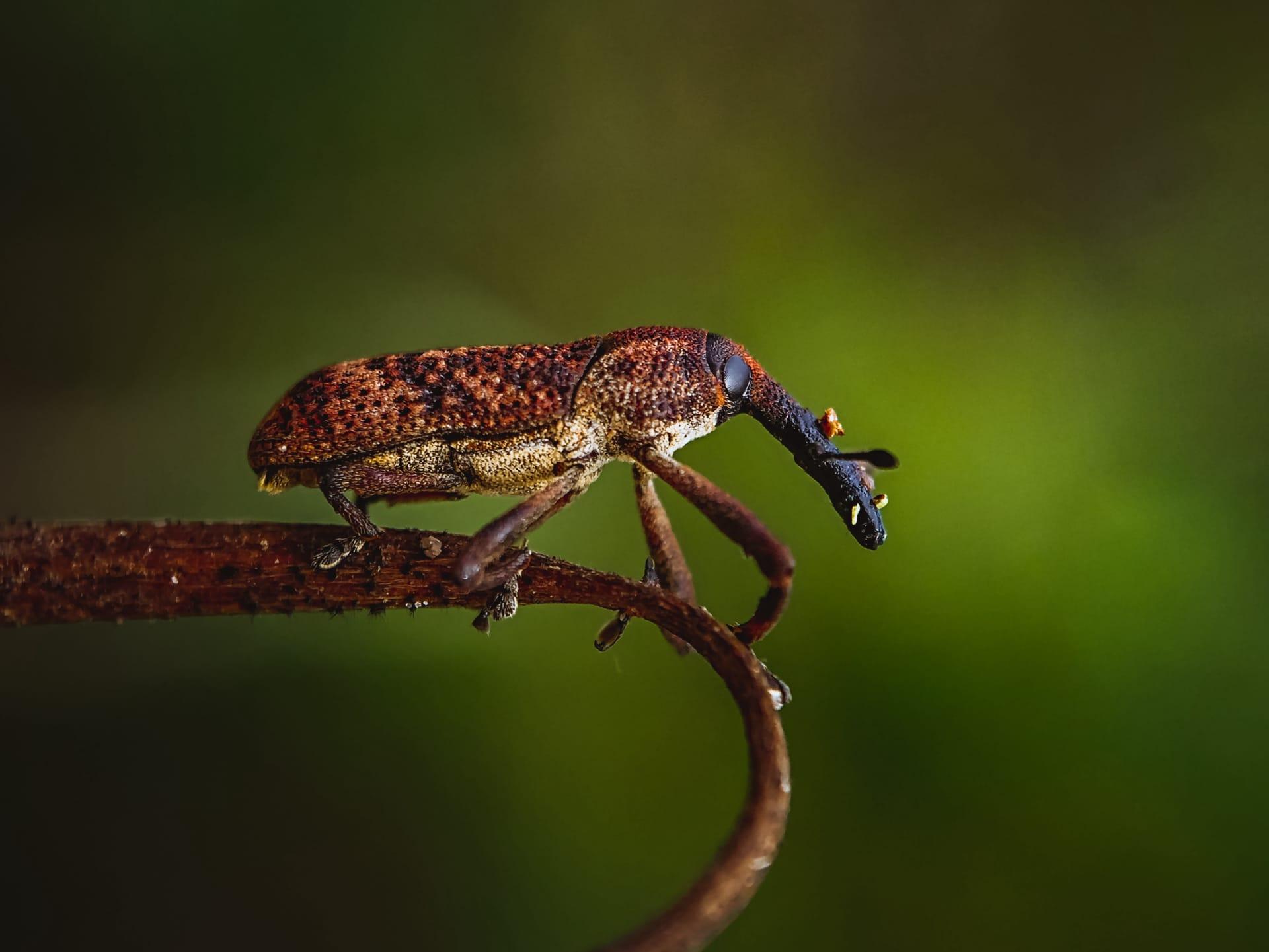Weevils
- Home /
- Mini Encyclopedia /
- Animal /
- Weevils
1
Weevils, belonging to the Curculionidae family, are a vast group with over 60,000 species, making them one of the largest families in the animal kingdom. Their most distinctive feature is the elongated snout, which varies in length and shape across species. This diverse group includes both the smallest beetles, measuring just a few millimeters, and larger species reaching up to 6 cm. Weevils are predominantly found in terrestrial habitats, with their diversity peaking in tropical regions. However, they are not limited to warm climates; some species have adapted to live in temperate zones and even in arctic conditions.
Weevils are truly global in distribution. They inhabit a range of environments, from forests and fields to human dwellings. The most common weevils are those associated with agriculture, such as the rice weevil and the boll weevil, notorious for their impact on crops. These species are often found in grain storage facilities worldwide. Other weevils, like the pine weevil, are known for their presence in forested areas. The adaptability of weevils to various climates and their ability to feed on a wide range of plant materials contribute to their widespread presence across continents.

2
Question: Do all weevils cause damage to crops?
Answer: This is a common misconception. While certain weevil species are indeed agricultural pests, many weevils play neutral or even beneficial roles in their ecosystems. For instance, some weevils are pollinators or help in decomposing organic matter. The diversity within the weevil family means their impact on human activities varies greatly. It's crucial to recognize that not all weevils are harmful to crops; some are even used in biological control to manage invasive plant species.

3
Weevils employ a variety of survival strategies. One of their key adaptations is their snout, which they use for feeding and boring into plant material for both food and egg-laying. This snout, along with strong mandibles, enables them to access food sources that are otherwise inaccessible to other insects. Camouflage is another survival tactic; many weevils have body colors that blend seamlessly with their environment, providing protection from predators.
Another interesting survival strategy is the weevil's life cycle adaptation. Many weevils have developed synchronized life cycles with their host plants, ensuring their larvae have an immediate food source upon hatching. Some species even display a form of dormancy known as diapause, allowing them to survive unfavorable conditions like extreme cold or drought.

4
In ecosystems, weevils have complex relationships. Many are key herbivores, influencing the growth and reproduction of plants. Some species, like the pine weevil, play a role in shaping forest landscapes by affecting the survival of young trees. In agricultural systems, certain weevils are considered pests, but in natural ecosystems, they contribute to the balance by controlling plant populations and aiding in nutrient recycling.
The role of weevils extends beyond plant interactions. They are a food source for various predators, including birds, mammals, and other insects, thus contributing to the food web. Furthermore, some weevil species are used in biological control programs to manage invasive plant species, demonstrating their potential as tools in maintaining ecological balance and biodiversity.

5
Film: "Tiny Titans: The World of Weevils" is a documentary produced in the United States in 2021. It offers an in-depth look into the life of weevils, showcasing their diversity and the roles they play in different ecosystems. The film captures remarkable footage of various weevil species, emphasizing their unique adaptations and survival strategies.
Book: "Weevils of the World: A Comprehensive Guide," published in the UK in 2018 by Dr. Emily Harrington, provides an extensive overview of weevil species worldwide. The book covers their taxonomy, biology, and ecology, with detailed photographs and distribution maps, making it an invaluable resource for entomologists and nature enthusiasts.
Book: "The Secret Life of Weevils," authored by Canadian biologist Thomas Fletcher and released in 2020, delves into the intricate behaviors and ecological roles of weevils. Fletcher combines scientific research with engaging narrative to explore how these insects impact their environments, from forests to farmlands, and the challenges they face in the modern world.